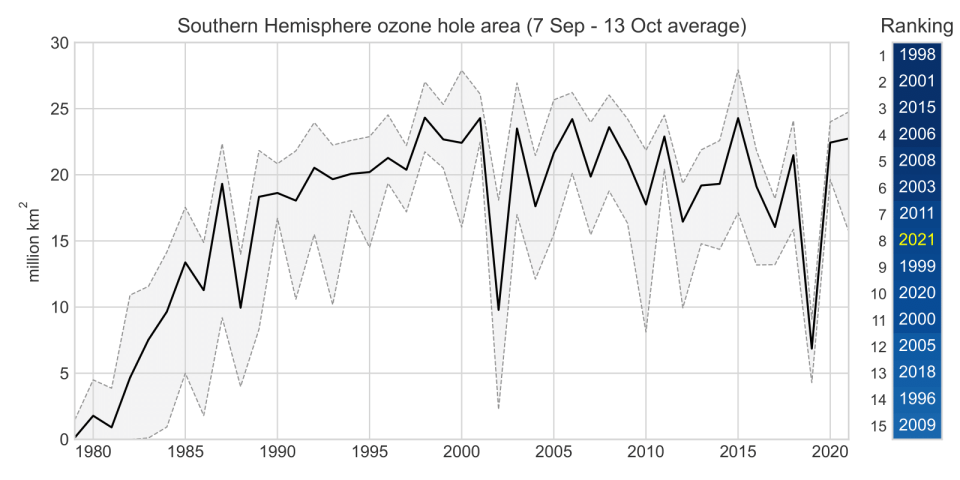Gepubliceerd op 19 januari 2022
CAMS scientists confirmed at the end of last month that the 2021 Antarctic ozone hole closed on 23 December, only a few days earlier than in 2020. Consequently, the 2021 ozone hole was one of the largest and longest-lived holes on record: in fact the record shows that only twice - in 1999 and 2020 – did the ozone hole close later than in 2021.

Time series of average, maximum and minimum extent of the ozone hole for the period 7 September -13 October (1979-2021)
After a rather standard start at the beginning of August, expansion of the ozone hole picked up in pace in the first two weeks of September to reach an extent larger than 75% of ozone holes at that stage in the season since 1979 and, as is the case most years, it had reached the size of Antarctica (14.2 million square kilometers) by early September. It continued to expand rapidly over the following weeks to reach its maximum extent for the year of 24.7 million square kilometers by the start of October – over 700,000 square kilometers greater than the maximum reached in 2020, making it the eighth largest ozone hole since records began in 1979.